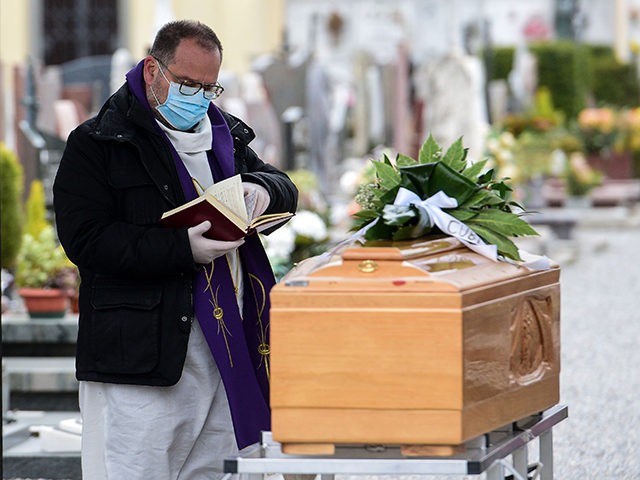Two professors of medicine at Stanford University have proposed that current assumptions about the mortality rate of the Chinese coronavirus are deeply flawed due to miscalculations of the infected population.
Writing in the Wall Street Journal (WSJ) Tuesday, Eran Bendavid, an infectious diseases physician, and Jay Bhattacharya, a professor of medicine, assert that “projections of the death toll could plausibly be orders of magnitude too high” because they are based on gross underestimations of the actual infection rate of the coronavirus.
“The true fatality rate is the portion of those infected who die, not the deaths from identified positive cases,” the authors insist.
As of March 3, the World Health Organization (WHO) estimated a mortality rate for COVID-19 of 3.4 percent, whereas assessment of the mortality rates for the virus in China ranged from 5.8 percent in Wuhan province to 0.7 percent elsewhere. The UK’s chief medical officer, Chris Whitty, on the other hand, has estimated that it will prove to be 1 percent or lower.
In their article, Drs. Bendavid and Bhattacharya suggest that all of these estimations may be significantly higher than the actual mortality rate, once we know how many cases of infection there really are.
Using data from the few places where we have a precise idea of how widespread infections are in a given population, we can extrapolate a more accurate mortality rate.
In the northeastern Italian town of Vò, for example, the entire population of 3,300 people was tested, revealing a prevalence of 2.7 percent. If this prevalence is applied to the whole province, there would have been 26,000 infections, or more than 130 times the number of reported cases. If this were true, Italy’s real fatality rate could be closer to 0.06 percent than the 8 percent rate based on reported cases, the authors note.
Using a similar analysis, the actual number of infections in Wuhan, China, could be in the neighborhood of 180,000 infections, “about 30-fold more than the number of reported cases,” they propose. “The fatality rate, then, would be at least 10-fold lower than estimates based on reported cases.”
Two key factors help account for these gross discrepancies, Drs. Bendavid and Bhattacharya suggest.
The test used to identify cases does not identify people who were infected and afterward recovered and for a long time, testing was reserved for the severely ill. Epidemiological models still do not reflect these factors.
Given the virus’ high contagion rate, Bendavid and Bhattacharya estimate as many as six million Americans have been infected with the disease, which could indicate a mortality rate of 0.01 percent.
“This is one-tenth of the flu mortality rate of 0.1%,” they note.
The authors hasten to insist that this “does not make Covid-19 a nonissue” and measures must be taken to prevent contagion wherever possible. But it does suggest that the direst predictions of deaths may be wildly overblown.
“If we’re right about the limited scale of the epidemic, then measures focused on older populations and hospitals are sensible,” they propose, and “policy makers will need to focus on reducing risks for older adults and people with underlying medical conditions.”
In this case, a “universal quarantine may not be worth the costs it imposes on the economy, community and individual mental and physical health,” they conclude.

COMMENTS
Please let us know if you're having issues with commenting.